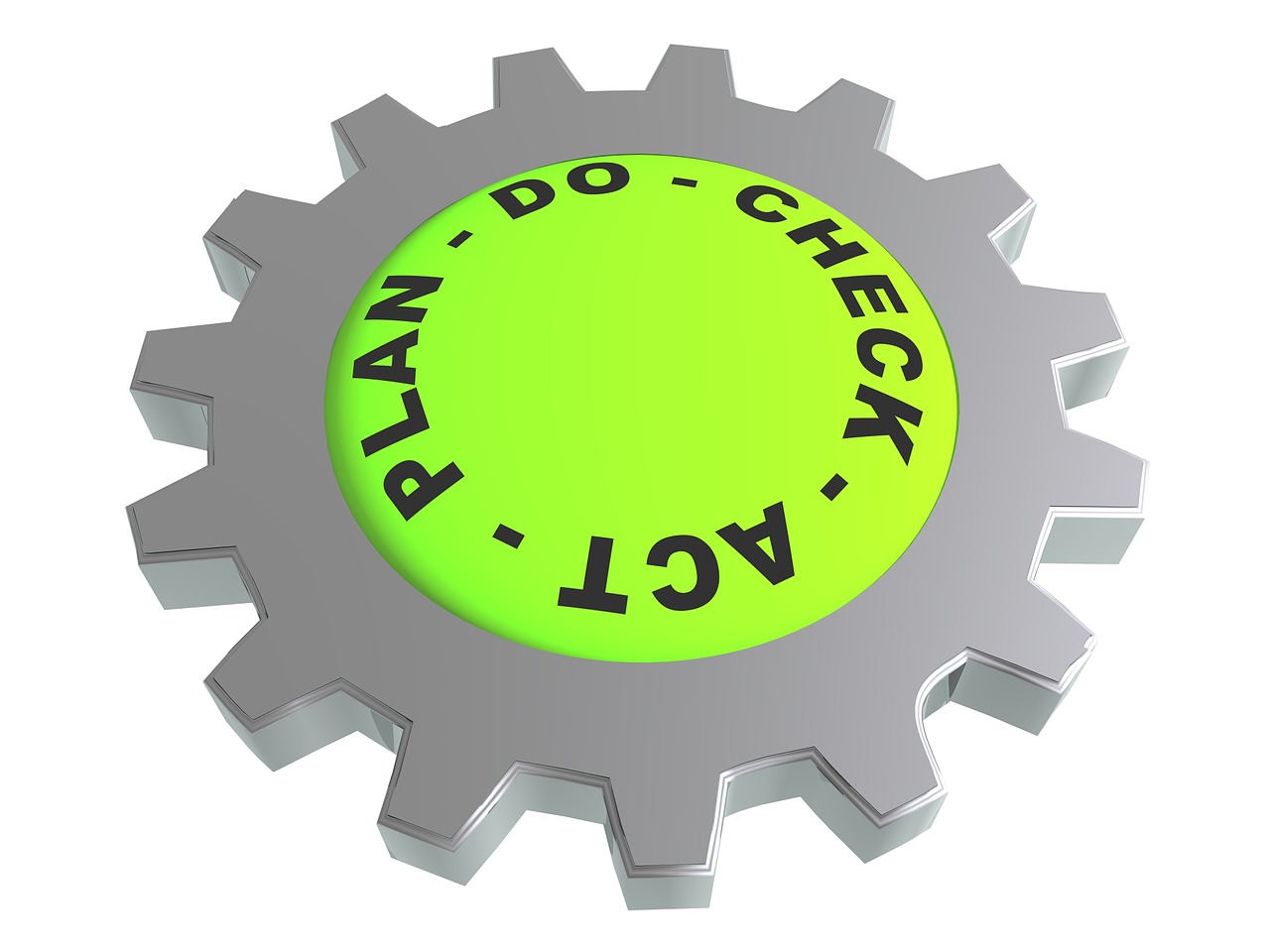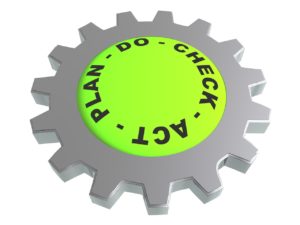PDCA Cycle: A Critical Tool for Driving Any Kaizen Process
5 minutes, 43 seconds read

Level: Beginner
What you will learn
- When to use the PDCA cycle
- How to implement each step: Plan, Do, Check and Act or Adjust
- Tools to support the PDCA cycle
While Kaizen lays out a philosophy that it is important to continuously improve in an organization to remain competitive, and there are a number of tools that can be applied to turn this methodology into action. One of the best known tools is PDCA. The PDCA cycle is also referred to as the Deming Cycle, for Total Quality Management expert and statistician Edward W. Deming who modified an earlier work by colleague Walter Shewart (Plan, Do and See).
The PDCA cycle is a Lean tool that can be used at any stage of an organizational transformation to drive progress and gauge success. It’s name is derived from its four steps: Plan, Do, Check, Act (or Adjust).
When to Use the PDCA Cycle
The are many instances where the PDCA cycle can be used to drive progress. These include:
- At the beginning of a new improvement project.
- When you first introduce a Kaizen program, to drive a cultural shift.
- While identifying root causes of problems to determine solutions.
- To improve a process that could be working more efficiently.
Now, let’s explore how each step works.
Plan
Whether you’re aiming for ongoing improvement or a dramatic transformation, the first step is to develop a plan. However, the planning step can actually be further broken down. This first step of the PDCA cycle is where you clarify the problem that you want to address. Here you might explore the impact of the problem you’re considering addressing and if this is the right problem to tackle to meet your goals.
Next, analyze the problem. Do you already have information at hand that can help you? What additional information might you need? Are there other impacted stakeholders whose input could help guide your project?
Finally, establish the steps you’ll need to take to reach your goal. You’ll want to establish the metrics that you will use to measure your plan’s success. Make sure that the objectives you set are SMART: specific, measurable, achievable, relevant, and time-bound.
You’re likely to apply one or many Lean tools to support your plan.
These might include one of the following:
- 5S: This system uses five principles to guide the organization of a workplace for utmost efficiency and productivity: sort, set in order, shine, standardize, and sustain.
- Standard Work: The definition of the most efficient method to produce a product.
- Visual Management: Through the use of graphics, color-coded information and other visual methods, this system aims to make information easier to grasp immediately. Visual management complements the idea of going to the gemba, or “real place.”
- Gemba Walk: Get and see with your own eyes the real place where work takes place. Ask questions, and show respect for the people performing this work. As the father of Lean manufacturing Taiichi Ohno said, “Data is, of course, important in manufacturing, but I place the greatest emphasis on facts.” A Gemba walk is a useful way to acquire these facts.
- Andon: This is a system designed to alert operators and managers of problems in real time so that corrective measures can be taken immediately.
- Poka-yoke: Any mechanism in the process that help operators to avoid mistakes.
- Kanban: This a scheduling system helps to achieve Just in Time results from a process.
- Process Mapping: There are two forms here. Visual Stream Mapping is a method for analyzing the current state of activities and designing a future state that will take a product or service from its beginning through to the customer with less waste. Swim Lane is a diagram or flowchart that visualizes workflow. It can show you the job and responsibilities for each step in a process.
- Single-minute Exchange of Dies: SMED is one of the many Lean production methods for reducing waste in the manufacturing process. It provides an efficient way of converting a manufacturing setup from the current product to the next product.
Do
Next, it’s time to execute the measures you defined in the first step. Typically you will begin with a small test project, so that you can minimize risk and gauge the effectiveness of your plan in the final two steps before rolling it out on a broad scale. During this stage you’ll also want to gather information to study in the next step.
Check
After your plan is set in motion during the “do” stage, you want to frequently verify the process performance and results. Make sure that you have enough data to get an accurate understanding of how your project is running. You can apply a dashboard report to help you track and follow-up on the process performance.
Act or Adjust
This essential step helps you fine-tune and learn from the action you’ve taken. If your project achieved the expected results, it’s time to implement it on a larger scale. On the other hand, the data may have revealed unexpected information, in which case you’ll want to repeat the PDCA cycle. It’s important to learn from the project failures and identify gaps for your next plan.
In fact, the PDCA cycle should be an ongoing process. No matter the results of your project, it’s likely to create new opportunities for improvement that can be studied and adjusted.
Tools to Support PDCA
Not sure how to start establishing your project guidelines? There are many tools available to support the PDCA cycle, including the following:
- 5W2H (5 Whys and 2 Hows) is a methodology that helps you to define a problem in the most effective way:
- What? Describe the problem.
- Why? Why this task is necessary?
- Where? Where does it occur?
- When? When did the problem start? What part of the process occurs in?
- Who? Who is affected?
- How? How can we recognize there is a trouble?
- How much? Quantify the problem
- A3 is a problem-solving methodology that guides users to:
- Clarify the problem (with 5W2H)
- Breakdown problems
- Set the target
- Analyze the root cause
- Develop countermeasures
- Implement countermeasures
- Monitor results
- Standardize
- Ishikawa, or Fishbone Diagram, helps show the causes of a specific event. It is divided into 5 areas:
- Manpower (people)
- Machines
- Materials
- Methods
- Materials
Next Steps
For More Information:
What Is the Plan-Do-Check Cycle?
ISixSigma’s Definition of the Deming Cycle
Plan Do Check Act: Continually Improving in a Methodical Way
Click here to learn more about Continuous Improvement.
Prev chapter: Kaizen vs. Innovation – Key Differences Between the TwoNext chapter: Business Benefits You Can Expect From Kaizen

